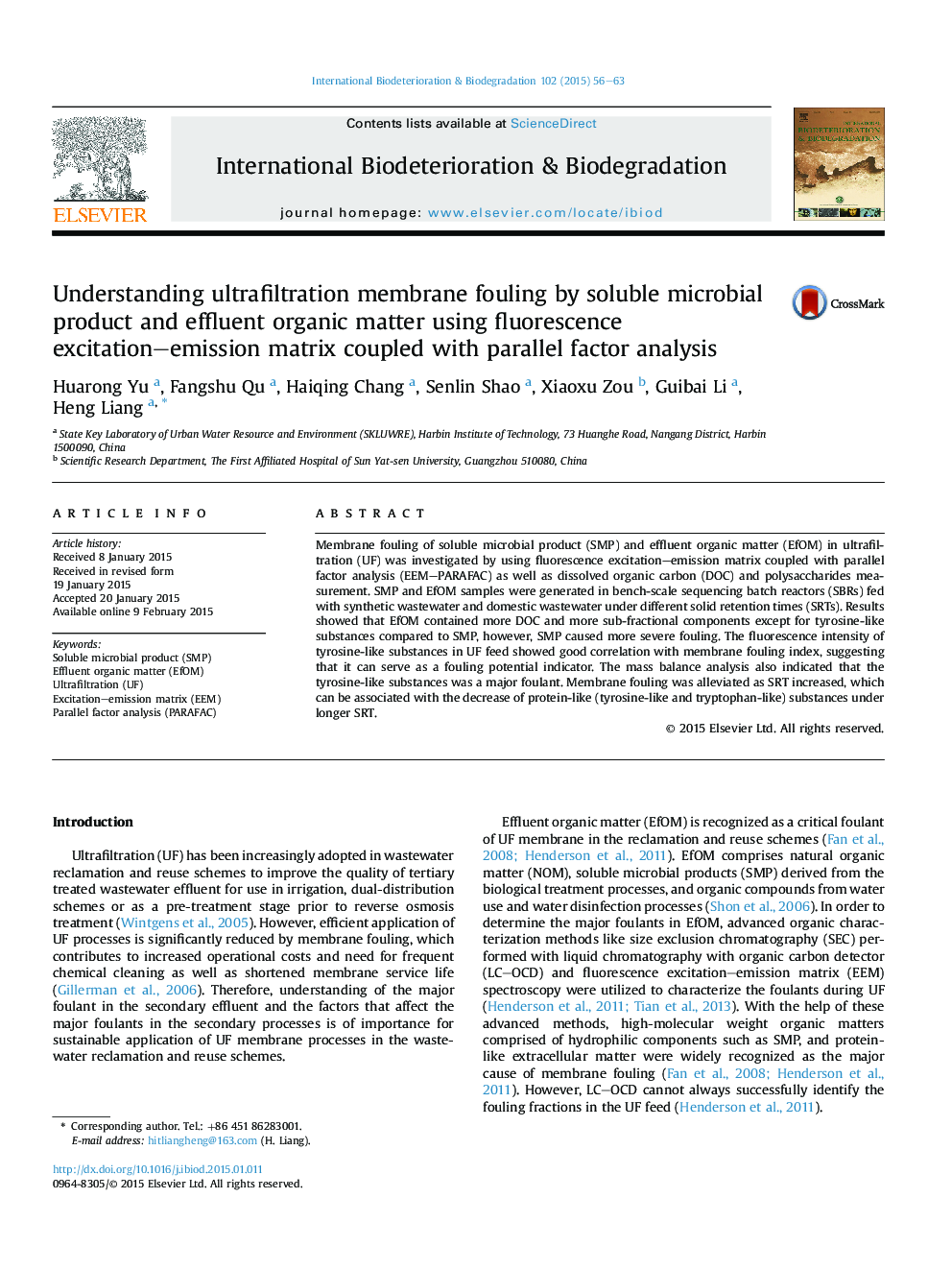| Article ID | Journal | Published Year | Pages | File Type |
|---|---|---|---|---|
| 4364349 | International Biodeterioration & Biodegradation | 2015 | 8 Pages |
•PARAFAC components in SMP/EfOM were correlated with the UF membrane fouling.•Tyrosine-like substances in SMP/EfOM were the major foulant.•Tyrosine-like substances in influent can serve as a fouling potential indicator.•UF membrane fouling was alleviated as SRT increased.
Membrane fouling of soluble microbial product (SMP) and effluent organic matter (EfOM) in ultrafiltration (UF) was investigated by using fluorescence excitation–emission matrix coupled with parallel factor analysis (EEM–PARAFAC) as well as dissolved organic carbon (DOC) and polysaccharides measurement. SMP and EfOM samples were generated in bench-scale sequencing batch reactors (SBRs) fed with synthetic wastewater and domestic wastewater under different solid retention times (SRTs). Results showed that EfOM contained more DOC and more sub-fractional components except for tyrosine-like substances compared to SMP, however, SMP caused more severe fouling. The fluorescence intensity of tyrosine-like substances in UF feed showed good correlation with membrane fouling index, suggesting that it can serve as a fouling potential indicator. The mass balance analysis also indicated that the tyrosine-like substances was a major foulant. Membrane fouling was alleviated as SRT increased, which can be associated with the decrease of protein-like (tyrosine-like and tryptophan-like) substances under longer SRT.
